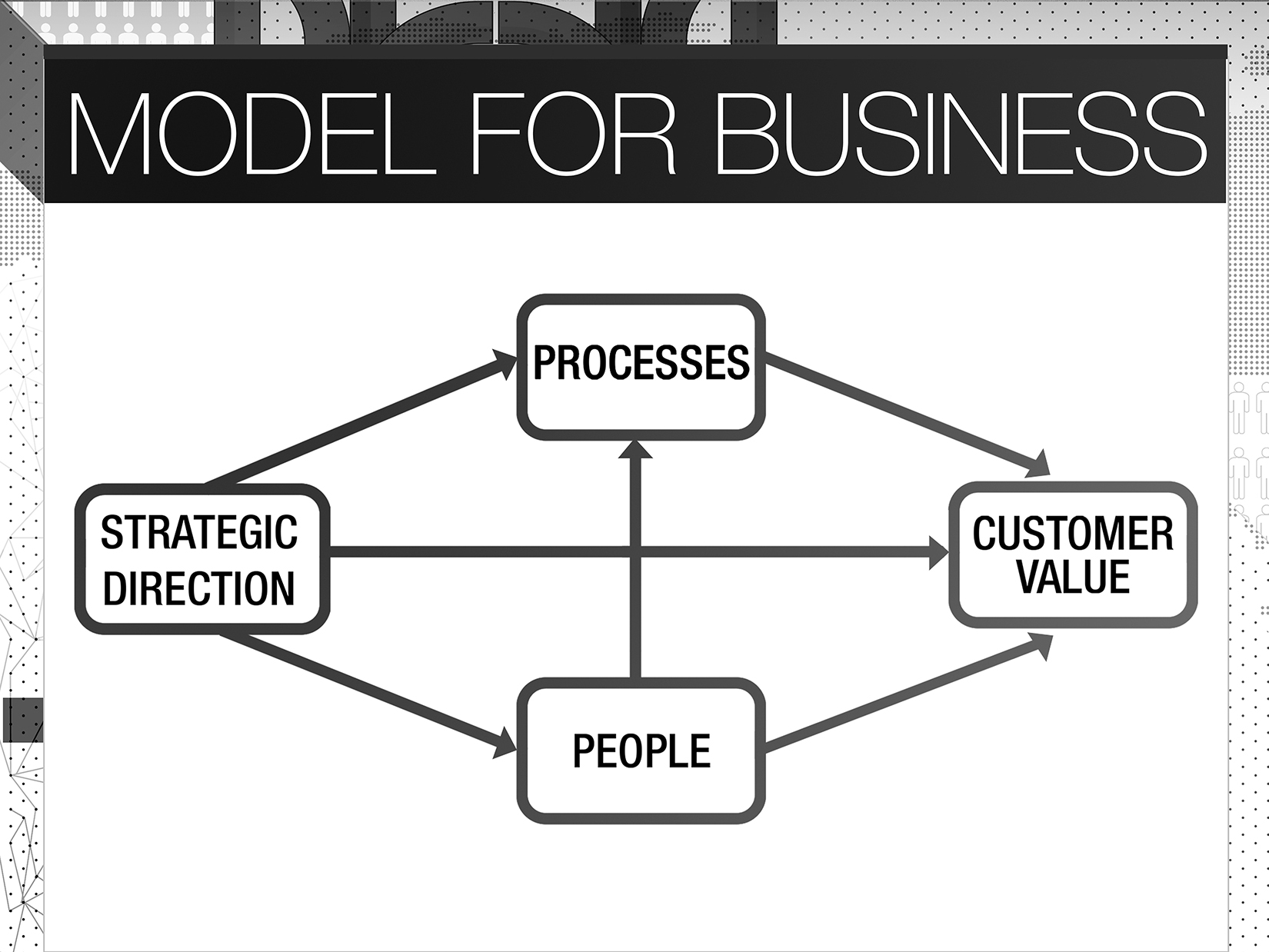Nobody sets out to kill off a relentless focus on driving profitable and sustainable customer value. Almost no one would purposefully make decisions that result in dissipating the organizational energy that is necessary to achieve important results.
But sometimes that is the inadvertent result of management’s decisions. Employing certain types of organizational solutions can trigger these kinds of reactions.
Let’s briefly identify the four principal elements of success in any organization.
Four principal elements of success
First principal element: Set the Strategic Direction
First, set the Strategic Direction that will lead to your success. This is critical in your drive for success, in part because it enables everybody in your organization to be “singing from the same song sheet” and gets people focused on results—the right results. To set the direction of a business, it is necessary to have confirmed:
- Your Vision,
- Identified your Pillars of Success,
- established multi-year Strategic Objectives and agreed on the Measures in which to track on-going performance
Finally, it is important that in setting the strategic direction it is understood what Key Initiatives will be required in the medium term, to get traction.

Second principal element: Improve your Business Process
Second, Process Improvement – fix the processes that are vital to your success. It is within your processes that work gets done, outputs are generated and benefits are created. Many of your processes deliver results to internal customers, but in the end, they all should contribute towards producing results for the ultimate customers.
It is essential to have all your business processes aligned to the organization’s strategic direction, to deliver sustained and profitable customer value. Not all processes are created equally. Given that resources are always limited, the focus must be on those priority processes that will maximize the return, by driving continuous improvement in critical areas, such as increased revenue, cost reduction, and higher quality levels.
Third principal element: Align and Mobilize your People
Third, Aligning and Mobilizing your People is essential. This involves leadership actions that enable your employees to understand their roles and responsibilities and to become better equipped to drive the successful implementation of strategies and plans. It is vital that through effective communications, training and mentoring our employees know, understand and believe in the required changes.
Forth principal element: Focus on your customers
Finally, a relentless focus on your customers is vital to your success. This involves building the kind of value propositions that are wanted by customers and delivering them through the channels that make the most sense to the customers and are the most cost-effective for your organization. Customer focus means constantly understanding what your customers are experiencing as they interact with our organization and as they use your products or services. Your job is not done until we are delivering value to the customer and capturing value for your organization.
Few will argue that the combination of Strategic Direction, Process Improvement, enabling your People and a relentless focus on the Customer aren’t the principal factors of success. However, there is one additional area that many organizations “bet the farm on and lose it”. The hope that Structural Change can be the panacea is widespread.

For example, let’s say that an organization decides in response to operational problems to make a structural change. It may decide to centralize what historically was a decentralized function. It could be a sales organization. It could be the IT services. On paper, the decision looks like magic. But the structural solution may only delay the organization’s attention to the real problems that the solution was designed to solve – a poor functioning sales process, or suboptimal IT processes, an absence of a guiding strategic direction, the failure to enable the people or a lousy focus on the customer.

Structural change is not a substitute for the elements of success noted above. Structural change often delays putting a focus on the elements of success. Instead of breakthroughs, structural change often causes long-term paralysis.

